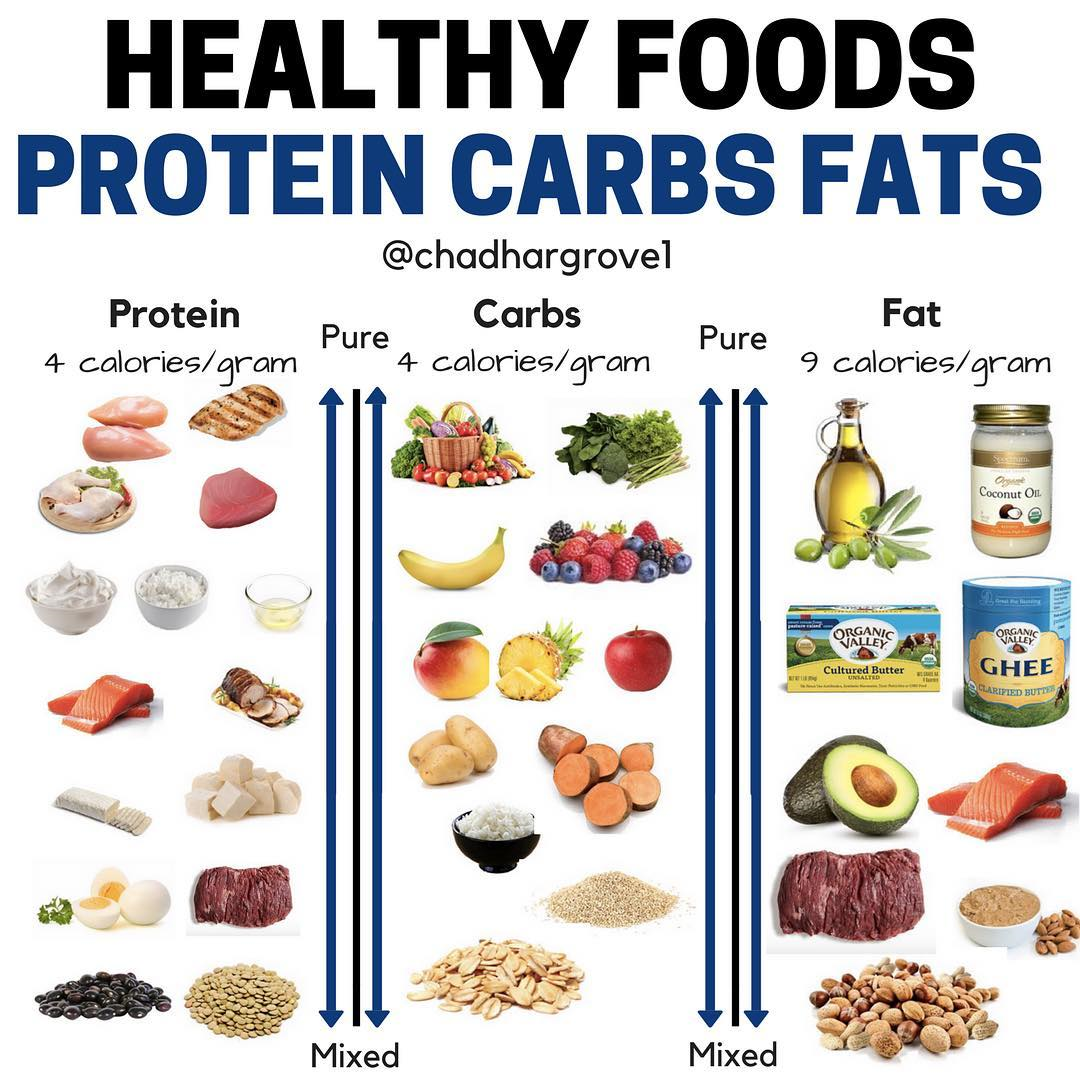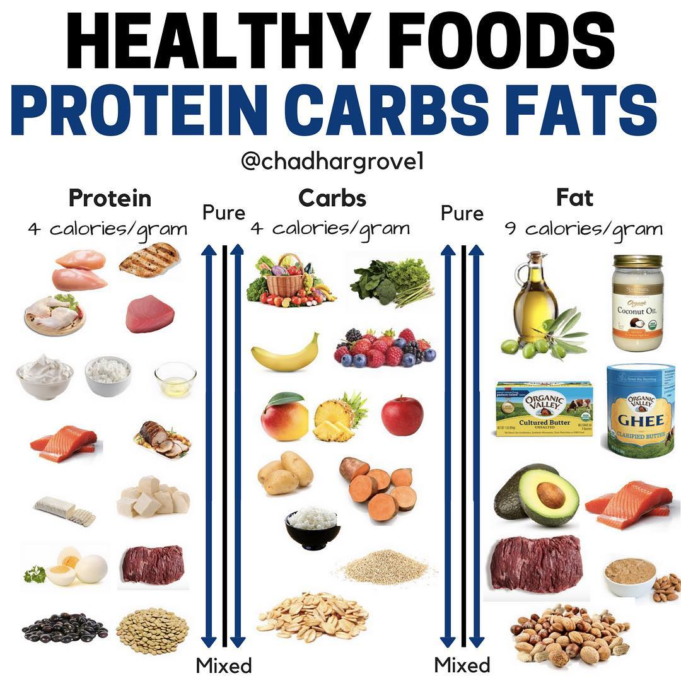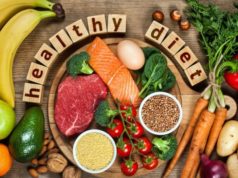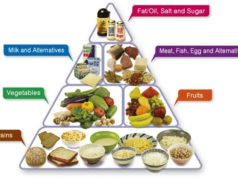Keto diet, a name that conjures images of butter-laden meals and a world devoid of bread. But is it just a fad, or a real path to weight loss and improved health? The keto diet, or ketogenic diet, is a high-fat, low-carb way of eating that forces your body to enter a state of ketosis, where it starts burning fat for energy instead of carbohydrates.
It’s like teaching your body to run on a new fuel source – fat – instead of its usual go-to, carbs.
The keto diet has gained popularity for its potential benefits, including weight loss, improved blood sugar control, and reduced inflammation. However, like any diet, it comes with its own set of challenges and potential risks. This guide will explore the keto diet in detail, from its basics to its potential benefits and drawbacks, helping you decide if it’s the right fit for you.
Keto Diet Basics
The ketogenic diet, often referred to as keto, is a popular weight-loss diet that involves drastically reducing carbohydrate intake and replacing it with fat. This shift in macronutrient consumption forces your body to enter a metabolic state called ketosis.
Macronutrient Ratios, Keto diet
The keto diet emphasizes a high-fat, moderate-protein, and very low-carbohydrate intake. Here’s a breakdown of the typical macronutrient ratios:
- Fat:70-80% of daily calories
- Protein:15-20% of daily calories
- Carbohydrates:5-10% of daily calories
This means that for a 2,000-calorie diet, you would consume approximately 160-200 grams of fat, 75-100 grams of protein, and 25-50 grams of carbohydrates.
Foods Allowed and Restricted
The keto diet restricts foods high in carbohydrates, such as sugary drinks, grains, and most fruits. It encourages the consumption of foods rich in healthy fats and protein.
Allowed Foods
- Healthy Fats:Olive oil, avocado oil, coconut oil, butter, ghee, fatty fish (salmon, tuna, mackerel), avocados, nuts (almonds, walnuts, macadamia nuts), seeds (chia seeds, flax seeds)
- Protein:Meat (beef, chicken, pork, lamb), fish, eggs, dairy products (cheese, yogurt), tofu, tempeh
- Low-Carb Vegetables:Broccoli, cauliflower, spinach, kale, Brussels sprouts, asparagus, mushrooms, green beans, bell peppers, onions, garlic
Restricted Foods
- Sugary Drinks:Soda, juice, sweetened tea, sports drinks
- Grains:Bread, pasta, rice, cereal, tortillas
- Fruits:Bananas, grapes, oranges, apples, mangoes
- Starchy Vegetables:Potatoes, corn, peas
- Legumes:Beans, lentils, chickpeas
- Processed Foods:Cookies, cakes, candy, chips, crackers
How the Keto Diet Works

The keto diet is a high-fat, low-carbohydrate eating plan that forces your body to enter a metabolic state called ketosis. In ketosis, your body starts burning fat for energy instead of carbohydrates, leading to potential weight loss and other health benefits.
Ketosis and Weight Loss
Ketosis is a natural metabolic process that occurs when your body doesn’t have enough carbohydrates for energy. Instead of relying on glucose (sugar) from carbs, your liver starts converting fat into ketones, which your brain and other tissues can use as fuel.
This shift in fuel source can lead to weight loss, as your body starts burning stored fat for energy.
Benefits of the Keto Diet
The keto diet has been linked to several potential health benefits, including:
Weight Loss
By promoting ketosis and burning fat for energy, the keto diet can help you lose weight. Studies have shown that people following a keto diet lose more weight than those on traditional low-fat diets.
Improved Blood Sugar Control
The keto diet can help regulate blood sugar levels, which is particularly beneficial for people with type 2 diabetes. By limiting carbohydrates, the diet can reduce insulin spikes and improve insulin sensitivity.
Reduced Inflammation
Inflammation is a natural process that helps your body heal, but chronic inflammation can contribute to various health problems. The keto diet’s emphasis on healthy fats and low carbohydrate intake may help reduce inflammation throughout the body.
Potential Drawbacks and Risks
While the keto diet can offer potential benefits, it also has some drawbacks and risks to consider:
Nutrient Deficiencies
The keto diet’s restrictive nature can lead to deficiencies in essential nutrients like fiber, vitamins, and minerals. It’s important to ensure you’re getting enough of these nutrients through other sources or supplements.
Keto Flu
Some people experience flu-like symptoms like fatigue, headache, and nausea during the initial phase of the keto diet. This is known as the “keto flu” and is usually temporary, lasting a few days.
Kidney Stones
The keto diet can increase the risk of kidney stones in some individuals. This is because the diet can lead to an increase in urine acidity, which can contribute to stone formation.
Long-Term Sustainability
The keto diet can be challenging to maintain long-term, as it requires significant lifestyle changes. Many people find it difficult to stick to the strict restrictions, which can lead to weight regain.
It’s important to consult with a healthcare professional before starting the keto diet, especially if you have any underlying health conditions.
Keto Diet for Beginners
Embarking on the ketogenic journey can feel like stepping into a whole new world of culinary adventures. But fear not, fellow keto newbies! We’re here to guide you through the basics, making your transition smooth and delicious.
Sample Keto Meal Plan for Beginners
This sample meal plan offers a balanced approach to keto eating, providing essential nutrients while keeping you in ketosis. Remember, every individual’s needs are unique, so feel free to adjust portions and ingredients based on your preferences and activity level.
Breakfast:
- 2 eggs scrambled with 1/4 cup diced bell peppers and 1/4 cup shredded cheese
- 1/2 cup berries with 1/4 cup unsweetened almond milk
Lunch:
- Large salad with 4 oz grilled chicken breast, 1/4 cup avocado, and 2 tablespoons olive oil dressing
- Leftover keto-friendly dinner from the night before
Dinner:
- 4 oz salmon with 1/2 cup roasted broccoli and 1/4 cup cauliflower rice
- Ground beef stir-fry with 1/2 cup mixed vegetables and 1/4 cup coconut aminos
Snacks:
- 1/4 cup mixed nuts
- 1/2 avocado with a sprinkle of salt and pepper
- Keto-friendly protein bar
Transitioning to a Keto Diet
Transitioning to a keto diet can be an exciting journey, but it’s important to be prepared for potential changes. The keto flu, a common side effect, is often characterized by fatigue, headache, and nausea. This is simply your body adjusting to using fat as its primary energy source.
Managing Cravings
Cravings are a natural part of the transition, but you can manage them with these tips:
- Stay hydrated:Drinking plenty of water can help curb cravings and keep you feeling full.
- Eat plenty of healthy fats:Healthy fats like avocado, nuts, and olive oil provide satiety and help keep your energy levels stable.
- Focus on protein:Protein-rich foods like eggs, fish, and meat help you feel fuller for longer.
- Embrace keto-friendly snacks:Having healthy snacks readily available can help prevent those sugar cravings.
Potential Side Effects
While the keto flu is a common side effect, it typically subsides within a few days. Here are some tips for managing it:
- Increase your electrolyte intake:Electrolyte imbalances can contribute to keto flu symptoms. Consider adding more salt to your meals, drinking bone broth, or taking electrolyte supplements.
- Stay hydrated:Dehydration can exacerbate keto flu symptoms. Make sure to drink plenty of water throughout the day.
- Get enough sleep:Sleep deprivation can worsen fatigue and headaches. Aim for 7-8 hours of sleep each night.
Essential Keto-Friendly Ingredients and Pantry Staples
Stocking your pantry with keto-friendly staples will make meal prep a breeze.
Essential Ingredients:
- Healthy fats:Olive oil, avocado oil, coconut oil, butter, ghee
- Protein sources:Eggs, fish, poultry, beef, pork, lamb, seafood, tofu, tempeh
- Low-carb vegetables:Broccoli, cauliflower, spinach, kale, asparagus, Brussels sprouts, green beans, bell peppers, zucchini, mushrooms
- Nuts and seeds:Almonds, walnuts, pecans, chia seeds, flax seeds
Pantry Staples:
- Spices:Salt, pepper, garlic powder, onion powder, paprika, oregano, thyme, basil
- Vinegars:Apple cider vinegar, balsamic vinegar, red wine vinegar
- Keto-friendly sweeteners:Stevia, erythritol, monk fruit
- Other:Coconut aminos, unsweetened almond milk, unsweetened coconut milk, heavy cream, unsweetened cocoa powder
Keto Diet Recipes
The keto diet emphasizes high-fat, moderate-protein, and very low-carbohydrate intake, requiring a shift in culinary habits. This section delves into the world of keto-friendly recipes, showcasing delicious and satisfying meals for breakfast, lunch, and dinner. It also explores how to create delectable keto snacks and desserts.
Breakfast Recipes
A keto breakfast can provide sustained energy throughout the morning while keeping you in ketosis.
- Keto Egg Muffins: Combine whisked eggs, cheese, chopped vegetables (like spinach or bell peppers), and seasonings. Pour into a greased muffin tin and bake until set. These portable muffins are a quick and nutritious breakfast option.
- Avocado Toast with Smoked Salmon: Instead of traditional bread, use sliced avocado as a base for this savory breakfast. Top it with smoked salmon, a sprinkle of Everything Bagel seasoning, and a squeeze of lemon juice.
- Keto Pancakes: These fluffy pancakes are made with almond flour, coconut flour, and eggs. You can add your favorite toppings like berries, whipped cream, or a drizzle of sugar-free syrup.
Lunch Recipes
Keto lunches can be filling and satisfying, offering a wide range of flavor profiles.
- Chicken Caesar Salad: This classic salad is keto-friendly when prepared with romaine lettuce, grilled chicken, parmesan cheese, and a homemade Caesar dressing made with olive oil, lemon juice, Dijon mustard, and garlic.
- Tuna Salad with Avocado: Combine canned tuna, mayonnaise, celery, onion, and avocado for a creamy and satisfying salad. Serve it on a bed of greens or with keto-friendly crackers.
- Keto Chili: This hearty chili is made with ground beef, beans (like black beans or kidney beans), tomatoes, onions, and spices. It can be served with a dollop of sour cream or avocado.
Dinner Recipes
Dinner on the keto diet can be as diverse and delicious as any other cuisine.
- Salmon with Roasted Vegetables: This simple yet elegant dish features pan-seared salmon and roasted vegetables like broccoli, asparagus, or Brussels sprouts. Season with salt, pepper, and herbs like rosemary or thyme.
- Keto Shepherd’s Pie: A comforting and flavorful dish made with ground beef, cauliflower mash, and a medley of vegetables. It’s a satisfying and low-carb option.
- Chicken Fajitas: Sizzle thinly sliced chicken strips with bell peppers and onions. Serve with a side of guacamole, sour cream, and keto-friendly tortillas or lettuce wraps.
Keto Snacks and Desserts
Snacking and desserts are still possible on a keto diet, with a focus on healthy fats and low-carb ingredients.
- Cheese and Meat Sticks: These are simple and satisfying snacks. Choose from a variety of hard cheeses and cured meats like salami, pepperoni, or prosciutto.
- Keto Chocolate Bark: Combine melted dark chocolate with nuts, seeds, and berries. Spread on a baking sheet and allow to cool. Break into pieces for a delicious and decadent treat.
- Avocado Chocolate Mousse: This creamy and rich dessert is made with avocado, unsweetened cocoa powder, and a touch of sweetener. It’s a guilt-free indulgence that satisfies your sweet tooth.
Keto Diet and Exercise
You’ve embarked on the keto journey, and you’re probably feeling energized and seeing results. But what about exercise? Can it supercharge your keto experience? The answer is a resounding yes! Exercise and the keto diet work together beautifully, creating a powerful synergy for weight loss, improved health, and increased energy levels.
The keto diet, with its focus on fat and protein, can feel like a rollercoaster of energy – one minute you’re soaring, the next you’re craving a donut. But hey, if you’re feeling a little sluggish, maybe it’s time to explore some weight loss strategies for improving mood and energy.
You might find that a little tweak to your keto routine can have you feeling like a brand new, high-energy, fat-burning machine.
Impact of Exercise on Keto
Exercise plays a crucial role in maximizing the benefits of the keto diet. It boosts your metabolism, helping your body burn more calories and fat, even while at rest. When you exercise, your body utilizes more energy, leading to an increased demand for fuel.
Since your body is primarily relying on fat for energy in ketosis, regular exercise encourages your body to burn more stored fat, accelerating your weight loss journey.
Keto-Friendly Workouts
You don’t need to hit the gym for hours to reap the benefits of exercise on keto. Here are some keto-friendly workout options:
High-Intensity Interval Training (HIIT)
HIIT workouts are short bursts of intense exercise followed by brief recovery periods. This method is incredibly effective for burning calories and improving cardiovascular health.
Example: 30 seconds of sprinting followed by 30 seconds of rest, repeated for 10-15 rounds.
Weight Training
Building muscle mass through weight training increases your metabolism, helping you burn more calories even at rest.
Example: 3 sets of 10-12 repetitions of exercises like squats, lunges, push-ups, and rows.
Cardio
Steady-state cardio, like running, cycling, or swimming, is excellent for burning calories and improving cardiovascular health.
Example: 30 minutes of running or cycling at a moderate pace.
Yoga
Yoga combines stretching and strength training, improving flexibility, balance, and muscle strength.
Example: A 60-minute yoga class that focuses on strength-building poses.
Adjusting Macronutrient Intake Based on Exercise Levels
As you increase your exercise levels, you might need to adjust your macronutrient intake to fuel your workouts effectively. Here’s how to do it:
Increase Protein
Your body needs more protein to repair and rebuild muscle tissue after exercise.
Keto, the diet that makes you feel like you’re living in a high-fat, low-carb utopia. But then the social events start rolling in, and suddenly you’re surrounded by temptations. Don’t worry, you can still enjoy those gatherings without sacrificing your keto goals! Check out this article on how to diet and still enjoy social events without overeating for some pro tips.
After all, who says keto can’t be fun?
Example: Increase your daily protein intake by 10-20 grams on days you exercise.
Increase Carbohydrates
While you’re still aiming for a low-carb diet, you might need to increase your carbohydrate intake slightly on days you exercise to provide your body with the energy it needs.
Example: Add a small amount of complex carbohydrates, like sweet potatoes or quinoa, to your post-workout meal.
Hydrate
Staying hydrated is crucial, especially when exercising.
Example: Drink plenty of water throughout the day and before, during, and after your workouts.
Remember, listen to your body and adjust your exercise routine and macronutrient intake as needed. The key is to find a balance that works for you and supports your keto journey.
Keto Diet and Health Conditions
The ketogenic diet, with its high-fat, low-carbohydrate profile, has gained popularity for its potential weight-loss benefits. However, its impact on individuals with specific health conditions warrants careful consideration. While some studies suggest potential benefits, it’s crucial to understand the risks and consult with a healthcare professional before adopting a keto diet.
Keto Diet and Diabetes
The keto diet’s effect on blood sugar levels is a significant factor for individuals with diabetes. The diet’s restriction of carbohydrates, the body’s primary energy source, forces it to utilize fat for fuel, leading to a reduction in blood glucose levels.
This can be beneficial for individuals with type 2 diabetes, who often struggle with high blood sugar.
- Improved Blood Sugar Control:Research suggests that the keto diet can help individuals with type 2 diabetes improve their blood sugar control. Studies have shown significant reductions in HbA1c levels, a marker of long-term blood sugar control, among individuals following a keto diet.
- Reduced Insulin Resistance:The keto diet can help improve insulin sensitivity, a crucial factor in managing type 2 diabetes. Insulin resistance occurs when the body’s cells don’t respond properly to insulin, leading to high blood sugar levels. The keto diet’s impact on blood sugar levels can contribute to improved insulin sensitivity.
- Potential Risks:While the keto diet may offer benefits for blood sugar control, it’s essential to note potential risks. Rapid weight loss, a common effect of the keto diet, can lead to fluctuations in blood sugar levels, potentially causing hypoglycemia (low blood sugar).Additionally, individuals with diabetes may need to adjust their medication dosages while on a keto diet to prevent dangerous blood sugar fluctuations.
Keto Diet and Epilepsy
The ketogenic diet has been used for decades as a treatment for epilepsy, particularly in children who don’t respond well to conventional medications. It’s believed that the diet’s metabolic shift to ketosis, where the body burns fat for energy, can reduce seizure frequency.
- Reduced Seizure Frequency:Studies have demonstrated that the keto diet can significantly reduce seizure frequency in individuals with epilepsy, particularly in children with drug-resistant epilepsy. The exact mechanism by which the diet works is still being investigated, but it’s believed that ketosis alters brain activity and reduces neuronal excitability.
- Potential Side Effects:While the keto diet can be effective in reducing seizures, it can also have potential side effects. These include constipation, fatigue, and nutrient deficiencies. It’s crucial to monitor for these side effects and work with a healthcare professional to manage them.
Keto Diet and Heart Disease
The keto diet’s potential impact on heart health is a topic of ongoing research. Some studies suggest that the diet’s high-fat content could be detrimental to cardiovascular health, while others highlight its potential benefits in improving cholesterol levels and reducing inflammation.
- Improved Cholesterol Levels:Research has shown that the keto diet can improve cholesterol levels, particularly by lowering LDL (bad) cholesterol and raising HDL (good) cholesterol. This improvement in cholesterol profile could potentially benefit cardiovascular health.
- Reduced Inflammation:The keto diet’s anti-inflammatory effects may also be beneficial for heart health. Inflammation is a key contributor to heart disease, and the keto diet’s reduction in inflammation could help protect against cardiovascular disease.
- Potential Risks:While the keto diet may offer benefits for cholesterol and inflammation, it’s important to note that its high-fat content can also increase the risk of heart disease. The diet’s potential to raise LDL cholesterol levels, particularly if it includes high amounts of saturated fat, could contribute to plaque buildup in arteries, increasing the risk of heart disease.
Keto Diet Myths and Misconceptions
The ketogenic diet, often referred to as the keto diet, has gained immense popularity in recent years, promising rapid weight loss and improved health. However, like any popular diet trend, the keto diet has become surrounded by myths and misconceptions that can lead to confusion and potentially harmful choices.
It’s essential to separate fact from fiction and rely on evidence-based information to make informed decisions about your health and well-being.
The Keto Diet is Only for Weight Loss
The keto diet’s effectiveness in promoting weight loss is well-documented, but it’s not just about shedding pounds. The keto diet can be beneficial for managing various health conditions, including:
- Type 2 diabetes: By reducing carbohydrate intake, the keto diet can help improve blood sugar control and insulin sensitivity.
- Polycystic ovary syndrome (PCOS): The keto diet’s impact on insulin levels can positively affect hormonal imbalances associated with PCOS.
- Epilepsy: The keto diet has been used for decades as a treatment for drug-resistant epilepsy in children.
- Alzheimer’s disease: Some studies suggest that the keto diet may have neuroprotective effects and could potentially slow the progression of Alzheimer’s disease.
It’s important to note that these potential benefits require further research and should be discussed with a healthcare professional before making any dietary changes.
The Keto Diet is Unhealthy and Can Cause Nutrient Deficiencies
While the keto diet restricts certain food groups, it doesn’t necessarily lead to nutrient deficiencies. By focusing on whole, unprocessed foods, it can provide a wide range of essential vitamins and minerals. However, it’s crucial to ensure adequate intake of:
- Fiber: Fiber is essential for digestive health and can be found in leafy green vegetables, cruciferous vegetables, and berries.
- Electrolytes: The keto diet can lead to electrolyte imbalances, especially in the early stages. It’s important to consume adequate amounts of sodium, potassium, and magnesium through electrolyte-rich foods or supplements.
- Vitamin D: Since many keto-friendly foods are low in vitamin D, supplementation may be necessary, especially for individuals with limited sun exposure.
It’s recommended to consult with a registered dietitian or a healthcare professional to ensure you meet your nutritional needs while following the keto diet.
The Keto Diet is a Quick Fix for Weight Loss
While the keto diet can lead to initial rapid weight loss due to water loss and reduced carbohydrate storage, it’s not a sustainable solution for long-term weight management. Weight loss on the keto diet, like any other diet, depends on individual factors such as metabolism, activity levels, and overall dietary choices.
- It’s essential to adopt a balanced and sustainable approach to weight loss, incorporating healthy habits and lifestyle changes for long-term success.
- The keto diet should be viewed as a tool to support weight loss, but it’s not a magic bullet.
The Keto Diet is a Fad Diet That’s Not Supported by Science
The keto diet has been around for decades and has been extensively studied. While research continues to explore its long-term effects, there’s a growing body of evidence supporting its benefits for weight loss, blood sugar control, and other health conditions.
- It’s important to differentiate between credible scientific studies and anecdotal evidence or personal opinions.
- Relying on reputable sources, such as peer-reviewed journals and medical organizations, provides a more reliable understanding of the keto diet’s potential benefits and risks.
The Keto Diet is Too Restrictive and Difficult to Follow
While the keto diet requires a significant shift in dietary habits, it can be personalized to fit individual preferences and lifestyles.
- There are numerous keto-friendly recipes and resources available to make the transition easier and more enjoyable.
- It’s important to choose a keto diet plan that aligns with your individual needs and goals.
Keto Diet Sustainability
The keto diet, with its focus on high fat and low carbs, has gained immense popularity for its potential weight loss benefits. However, the long-term sustainability and impact on overall health are crucial considerations. This section explores the factors that influence the long-term viability of the keto diet and provides strategies for maintaining this lifestyle.
Keto, the diet that makes you crave cheese more than your ex. But hey, who wants to give up their social life, right? If you’re looking to lose weight without completely ditching the booze, check out this article on losing weight without giving up alcohol completely.
It might just be the key to unlocking your inner keto-warrior, even if it’s a warrior who occasionally enjoys a cocktail or two. Just remember, moderation is key, even if it’s the moderation of cheese intake!
Strategies for Maintaining a Keto Diet
Sustaining a keto diet requires a conscious effort to maintain the required macronutrient balance and address potential nutritional deficiencies. Here are some strategies for maintaining a keto lifestyle:
- Focus on Whole Foods:Prioritize whole, unprocessed foods like meat, poultry, fish, eggs, vegetables, nuts, and seeds. These provide essential nutrients and satiety, making it easier to stick to the diet.
- Plan Meals and Snacks:Planning meals and snacks in advance helps prevent impulsive choices and ensures you have keto-friendly options readily available. This is especially helpful during busy schedules or social events.
- Experiment with Recipes:Explore a wide range of keto-friendly recipes to avoid monotony and keep meals exciting. There are countless resources online and in cookbooks to find delicious and satisfying keto options.
- Track Macros:Tracking macronutrients (carbs, protein, and fat) can help ensure you stay within your ketogenic range. There are numerous apps and online tools available to make this process easier.
- Seek Support:Joining a keto community or finding a support group can provide motivation, accountability, and helpful tips from others following a similar lifestyle.
Addressing Potential Nutritional Deficiencies
While the keto diet can be beneficial, it can also lead to certain nutritional deficiencies if not carefully managed. Here are some key nutrients to monitor and strategies to address potential deficiencies:
- Fiber:The low-carb nature of the keto diet can lead to a lack of fiber. Increasing fiber intake through high-fiber vegetables, nuts, and seeds is crucial for digestive health and blood sugar regulation.
- Electrolytes:The keto diet can cause electrolyte imbalances, particularly sodium, potassium, and magnesium. Consuming electrolyte-rich foods like bone broth, coconut water, and leafy greens, or using electrolyte supplements, can help maintain balance.
- Vitamins and Minerals:A varied keto diet should provide essential vitamins and minerals. However, supplementation may be necessary to address potential deficiencies, especially in vitamins C, E, and K, as well as magnesium and calcium.
Importance of Addressing Potential Nutritional Deficiencies
Addressing potential nutritional deficiencies is crucial for long-term health and well-being. Inadequate intake of essential nutrients can lead to various health problems, including:
- Digestive Issues:Low fiber intake can contribute to constipation and digestive discomfort.
- Electrolyte Imbalances:Inadequate electrolytes can cause fatigue, muscle cramps, headaches, and dizziness.
- Nutrient Deficiencies:Lack of essential vitamins and minerals can weaken the immune system, affect bone health, and contribute to other health issues.
Final Review
The keto diet is a unique and potentially powerful approach to health and weight management. It’s not a quick fix, but rather a lifestyle shift that requires commitment and careful planning. By understanding the fundamentals of ketosis, exploring its benefits and drawbacks, and learning to navigate its challenges, you can make an informed decision about whether the keto diet is the right path for you.
Remember, always consult with your doctor before making any major dietary changes.
Essential Questionnaire
Is the keto diet safe for everyone?
While the keto diet can be beneficial for some, it’s not suitable for everyone. Individuals with certain medical conditions, such as kidney disease or eating disorders, should consult their doctor before starting a keto diet.
How long does it take to enter ketosis?
It typically takes 2-4 days for most people to enter ketosis. However, individual results may vary depending on factors such as starting weight, diet history, and exercise levels.
What are some common side effects of the keto diet?
Common side effects of the keto diet include fatigue, headaches, constipation, and bad breath. These symptoms usually subside within a few days to a week as your body adjusts to burning fat for fuel.
Can I exercise on the keto diet?
Yes, you can exercise on the keto diet. In fact, exercise can enhance the benefits of the keto diet by boosting fat burning and improving overall health.
Is it okay to cheat on the keto diet?
Occasional “cheat meals” or days can be part of a sustainable keto lifestyle. However, it’s important to keep these instances limited and to quickly get back on track with your keto diet plan.
























